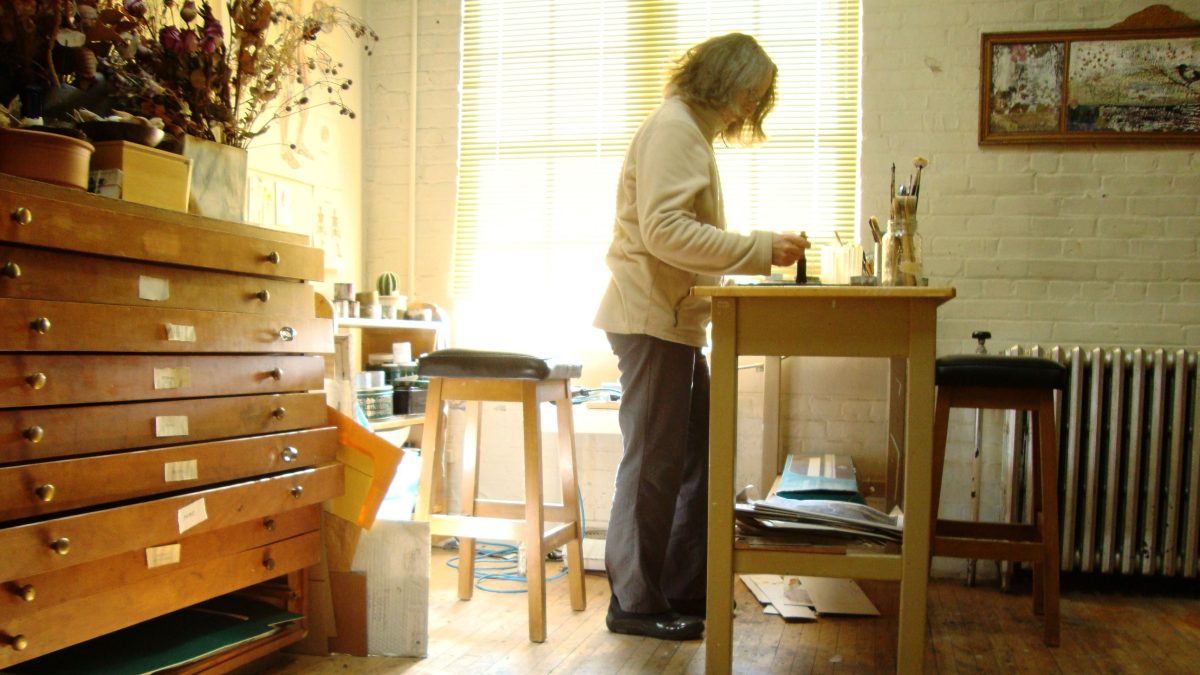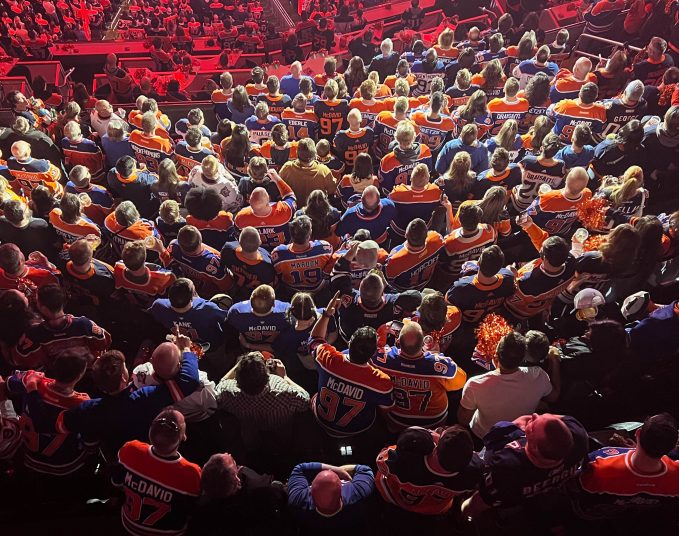There are some spaces in a city that just sort of exude a frenetic energy. You probably know the type of place I’m talking about — that funky corner coffeeshop, the vibrant watering hole at the end of the block, the auspiciously cool record store.
They’re the sorts of places that seem to naturally draw people to them and come imbued with a special sort of creativity. For Edmonton artists Russ Hewitt, Marlena Wyman and Patrick Arès-Pilon, that place was the Ortona Armoury.
A hub for Edmonton’s creative community since the early 1990s, the historic building in Rossdale became a de facto arts centre and flashpoint for the city’s creatives when the tenants, by then almost entirely comprised of artists, formed the Ortona Armoury Tenants Association (OATA) in 1998 and soon began overseeing the day-to-day operations of the building.
“There was something really special in that building,” Hewitt, a photographer, OATA board member and former Ortona tenant, said. “Musicians, painters, filmmakers, photographers — there were all these different artists that came in and enriched the space.”
That lasted until 2017, when the City began planning renovations and a change of leadership at the Ortona. After several consultations with OATA, the tenants were eventually moved out.
“In 2019 we left and were told it would be a couple of years before we could come back,” said Wyman, a visual artist and former tenant at the Ortona. But disruptions from COVID-19 ballooned that timeline and extended the time the former residents had to stay out.
“It took about five years altogether,” Wyman said.
The newly renovated Ortona, dubbed ArtsHub Ortona, is now under the management of Arts Habitat Edmonton — a non-profit organization that curates and manages creative spaces and studios at several locations in Edmonton. It is scheduled to re-open this fall. But along with the building’s new management and interior facelift, there are also new rules and requirements that the building’s former tenants are none too happy about.
“The City decided they didn’t want the artists to run it anymore,” Wyman said. “They wanted an arts organization to run it. Arts Habitat came in and we thought ‘OK, that’s fine’ until we started to find out that what was promised [during the initial consultations] didn’t matter anymore. We could return to our studios, but it would only be for a year.”
The new space, which includes 18 “project studios” on the second floor and office spaces on the ground level, is now subject to fixed-term leasing restrictions, allowing each potential tenant to only rent the studio space for a maximum of one year at a time. That, Wyman said, is antithetical to the needs of the artists the space used to house and those it may house in the future. She would like to see longer terms available, or a hybrid model of both short and long-term options introduced.
“It takes time and labour to set up a studio,” Wyman said. “As artists, the way we work and our business model is so different than a regular business model. We might get a commission or exhibit that we’re working towards and it often takes more than a year to create that. If I only had my studio for a year and I have a commitment to do this exhibit, what do I do? I’m out. I don’t have space and cannot fulfil that commitment.”
Julian Mayne is the executive director with Arts Habitat Edmonton. Mayne said the decision to implement fixed-term limits on the renovated studio spaces came from on high at the City when Arts Habitat took over management of the building, adding the term limits are intended to extend the space’s availability to more than just 18 long-term tenants.
“The thinking is that it’s a City building that has had a lot of taxpayer dollars go into it and it needs to be for more than just a few people,” Mayne said. “[The issue of lease terms] is a discussion [OATA] has brought forward to us. But who gets those long-term leases? How do you decide who gets the long-term one? That’s the fly in the ointment. I think they’re the ones that want the long-term leases.”
The disagreement over how the space should be utilized has led to acrimony between the two parties, with Arès-Pilon criticizing Arts Habitat Edmonton for what he feels is a lack of transparency and a hesitance to collaborate or compromise with the arts community.
“I don’t feel like this organization is fulfilling the needs of artists in Edmonton,” Arès-Pilon, a multidisciplinary artist and OATA’s secretary, said. “A lot of people from the arts community … feel Arts Habitat is distant from the community they serve. They’re not accountable and transparent.
“From what I understand, they don’t have a voting membership base beyond a board of directors. How is that board chosen if there’s no broad membership?,” Arès-Pilon added. “It’s important to have allies of the arts on a board.”
There is at least some collaboration between the two groups, with an advisory board — on which Arès-Pilon sits — having been struck after members of OATA voiced concern to the City over the matter late last year. However, Arès-Pilon said the advisory board and Arts Habitat have only meet twice for about an hour.
“It’s not a lot of time for us to get into the thick of things at all,” Arès-Pilon said.
Hewitt, who would have liked to have seen management remain in the hands of the tenants, agrees.
“There’s a feeling among the artists that Arts Habitat is kind of in it for Arts Habitat and not the for the artists,” he said.
OATA’s calls to find a middle ground with Arts Habitat aren’t strictly about changing policy. For Arès-Pilon, Hewitt and Wyman, it’s also about concern over the loss of the grassroots community that bloomed there so many years ago.
“We had such a vibrant community. There was movement. To be honest, we had it going on at the Ortona,” Hewitt said. “Now we’re just going to be a bunch of nomads coming in, hanging around for a year, and then getting turfed out until the cycle comes around again in two, three, four or five years. What kind of practice can be fostered in that situation?”
Savvy AF. Blunt AF. Edmonton AF.




